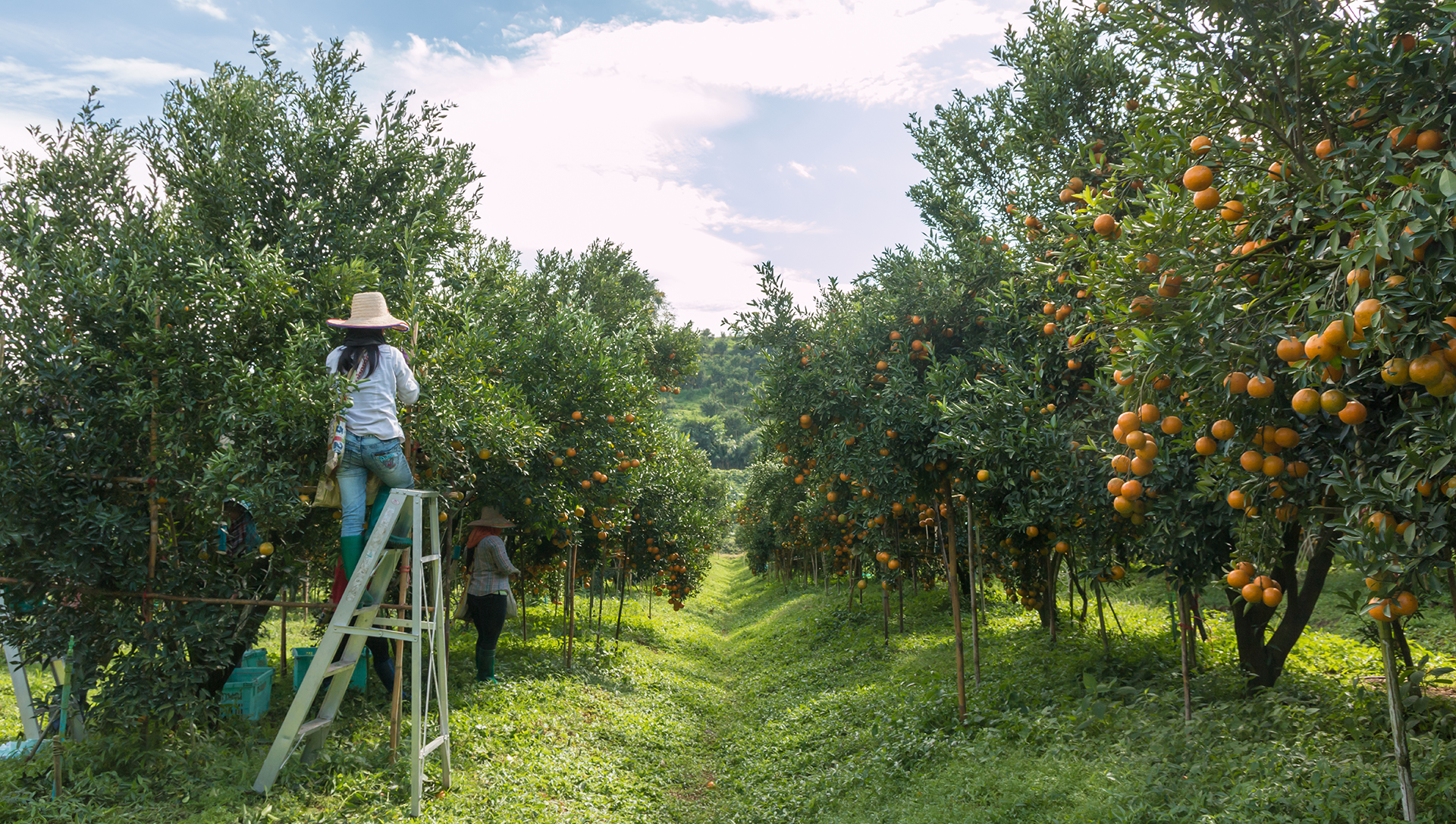
Since Huanglongbing (HLB), the deadly citrus tree disease which has infected thousands of residential citrus trees throughout California, was first detected in the state in 2012, California’s citrus industry has been working to identify ways in which HLB and the pest that carries the disease, the Asian citrus psyllid (ACP), can be kept at bay through regulations, citrus quarantines and more.
Although, as of today, HLB has not yet been detected in a commercial citrus grove, growers have been provided with a portfolio of voluntary best management practices to provide further support in limiting the spread of ACP and HLB, in addition to abiding to regulations that are in place throughout the state. A study conducted by researchers at University of California (UC), Davis and UC Riverside, in collaboration with Citrus Research Board, examined citrus growers’ willingness to adopt these practices, measured the impact these practices may have on operations, and more.
Voluntary Grower Response Plan
In 2019, a task force of grower representatives and researchers collaboratively developed a Voluntary Grower Response Plan for HLB, which is meant to provide citrus growers with a strong toolbox of science-supported strategies and tactics to protect their orchards from HLB. The recommendations – which are grouped based on a grower’s proximity to an HLB detection – represent the most effective tools known to the citrus industry and are meant to supplement the California Department of Food and Agriculture’s required regulatory response. The plan was endorsed by the Citrus Pest & Disease Prevention Committee (CPDPC) and presented to the citrus industry in 2019 through a series of grower seminars.
Researchers at UC began their study at these seminars to identify the natural willingness that growers may – or may not – have toward adopting these best practices, determining which practices growers were in favor of most and understanding the factors that may influence their decisions.
Through a series of questions, UC researchers assessed 160 citrus growers’ propensity to adopt these newly approved best practices.
Key Takeaways
When any invasive plant disease is discovered in a new location, management efforts to limit the spread of that disease must be kicked into high gear. However, the research found that the proximity to a current HLB detection may influence the urgency of which a grower or industry member is willing to proactively prepare.
Across three major citrus-growing regions in California, the Central Valley, Central Coast and Desert Regions, a majority (71%) of respondents thought that it was unlikely or very unlikely that an HLB-positive tree would be detected in their grove from July 2019 to June 2020. In comparison to a similar survey conducted in 2015, when asked the perceived likelihood of an HLB detection, 26% of respondents thought that it was unlikely or very unlikely that an HLB-positive tree would be detected in their grove by 2020; showing that the majority believes that the spread of HLB is not happening as fast as they thought it would four years ago.
Although there has not yet been a confirmed HLB-positive tree in a commercial grove (as of April 2021), participants who perceived a higher likelihood of detecting HLB in the initial surveys seemed to be more willing to scout, survey and test, which are three monitoring practices directly aimed at detecting HLB. In addition, the likelihood of a grower to stay informed and communicate with grower liaisons had a positive impact on the propensity to adopt the best practices.
Remaining Vigilant
While the results of the UC study show growers’ confidence in being able to control HLB is increasing, the industry should be cautious not to fall victim to its own success. Following the voluntary best practices and adhere to regulatory requirements has fueled this success and that diligence should continue if we want to keep HLB out of commercial groves.
“As an industry, we must keep our foot on the accelerator to keep this devastating disease out of our orchards. As HLB continues to spread across residential areas throughout Southern California, we must remain proactive – even when things are quiet in our groves – to ensure we continue to stay on top of this elusive pest and disease,” said Jim Gorden, chairman of the CPDPC. “It is important that we as an industry implement the voluntary best practices that work best for our operations, as the cost to manage ACP is much less than the potential hit to our industry if HLB spreads.”
To learn more, read the full report conducted by UC.
